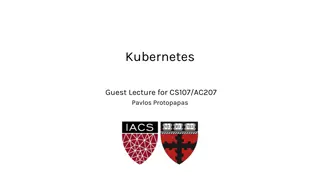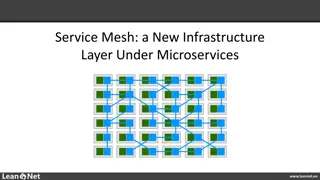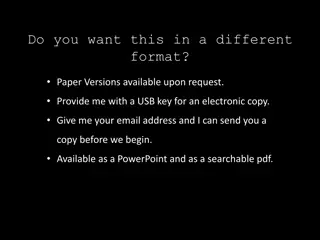
Microservices vs Monolithic Applications: A Modern Approach to Software Development
Discover the advantages of microservices over traditional monolithic applications in software development. Learn about the characteristics of microservices, the challenges of monolithic systems, and the benefits of implementing a microservice architecture for scalable and resilient applications.
Download Presentation

Please find below an Image/Link to download the presentation.
The content on the website is provided AS IS for your information and personal use only. It may not be sold, licensed, or shared on other websites without obtaining consent from the author. If you encounter any issues during the download, it is possible that the publisher has removed the file from their server.
You are allowed to download the files provided on this website for personal or commercial use, subject to the condition that they are used lawfully. All files are the property of their respective owners.
The content on the website is provided AS IS for your information and personal use only. It may not be sold, licensed, or shared on other websites without obtaining consent from the author.
E N D
Presentation Transcript
COM 3105 E-COMMERCE APPLICATION DEVELOPMENT Hans Yip
Learning Objectives What is microservice?
What is microservice? microService: is an architectural style in which applications are composed from loosely coupled API services with automated lifecycles. NOTE: Microservice is a variant of the SOA (Service- oriented architecture) architectural style that structures an application as a collection of loosely coupled services.
Without MicroService PAST Complex, single-unit, Monolithic solutions
With MicroService FUTURE Cloud & microService based, SaaS solutions
Characteristics of microService Behavior: Deployed Independently & Frequently. Control: Easily Scale Development. Reusability: Services are built for reusable. Resiliency: Independently Affected & Highly Observable (easy to id the problem).
MicroServices vs Monolithic Applications Traditional software development processes (waterfall, agile, etc) usually result in relatively large teams working on a single, monolithic deployment artifact. There are some issues with the traditional approaches: no single developer (or group of developers) understands the entirety of the application. Limited re-use is realized across monolithic applications. Scaling monolithic applications can be challenging.
MicroServices vs Monolithic Applications A microservice architecture with cloud deployment technologies and API management provides an alternate approach to software development. The monolith is instead broken up into a set of independent services that are deployed and maintained separately. This has the following advantages: Services are encouraged to be small. (less time to develop, and easy to deploy) Services using standard interface protocol can be consumed and re-used by other services. Services exist as independent deployment artifacts and can be scaled independently.
MicroServices vs Monolithic Applications The tradeoff of this flexibility is complexity. Managing a multitude of distributed services at scale is difficult: Services potentially are too granular . (good documentation is needed, so that easy to search for them, and easy to id the impact during services downtime. Testing may be complex). Degrading performance during heavy use of services.






















